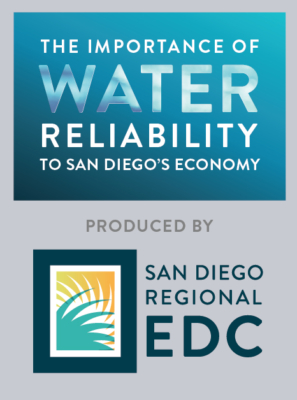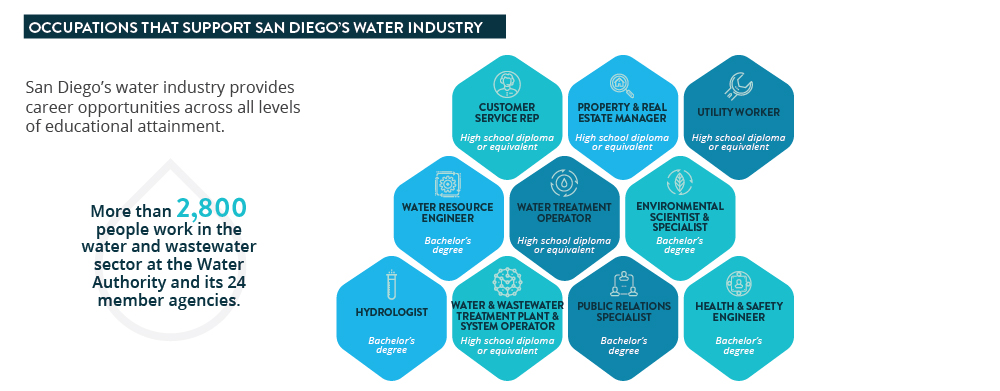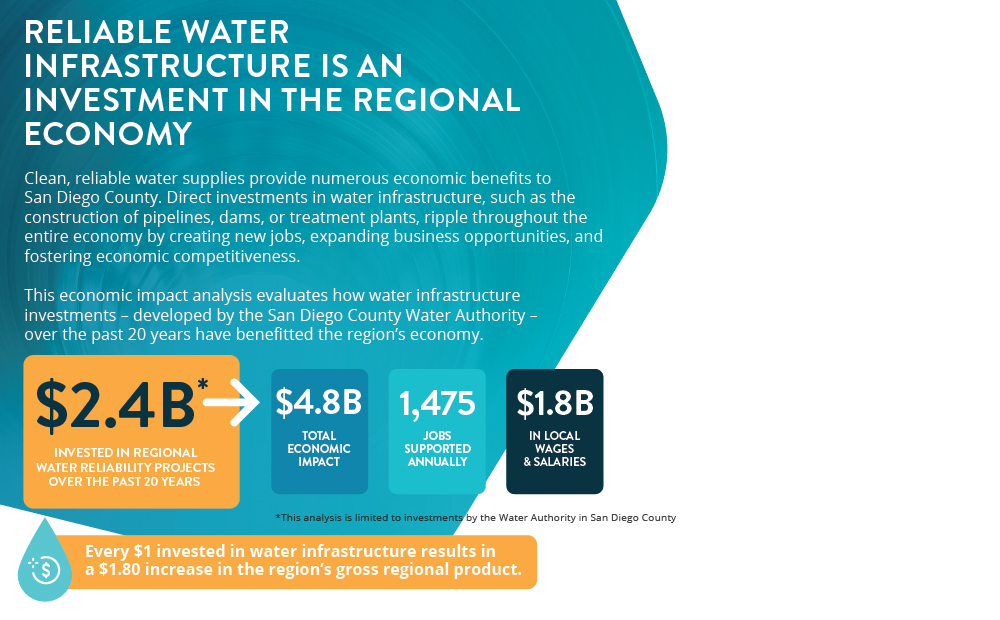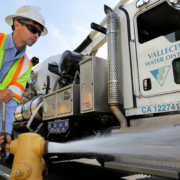San Diego’s regional economy depends on cutting-edge industries such as life sciences, technology, aerospace, academia – not to mention the vibrant brewing sector. Together, those industries help drive economic prosperity countywide, and they share a basic need: reliable access to water.
It may seem obvious, but newly released numbers reveal just how vital a safe and reliable water supply is to the region’s economy.
 Those five water-dependent industry clusters – life sciences, technology, aerospace, academia and brewing – collectively support daily business sales of nearly $30 million, according to a new report from the San Diego Regional Economic Development Corp.
Those five water-dependent industry clusters – life sciences, technology, aerospace, academia and brewing – collectively support daily business sales of nearly $30 million, according to a new report from the San Diego Regional Economic Development Corp.
And that’s just five industries. Total regional sales supported per day by reliable access to water amount to $482 million. That’s equivalent to 2.7 Comic-Cons every day.
A reliable water supply supports confidence by business in economic growth
Every day, the Water Authority delivers an average of 426 million gallons of water to 24 member agencies that serve 1.1 million households, more than 98,000 businesses, and 251,000 acres of farmland.
“One of the things that I think is really important about having a reliable water source is that it gives people confidence in our system,” Janice Brown, board chair of the regional EDC said during a late-June event to release the study. “And giving companies confidence in our system causes people to have more trust in economic growth.”
Over the past 20 years, the Water Authority has invested $2.4 billion in five major water reliability projects in the region, including new pipelines, dams and treatment plants, according to the EDC report, “The Importance of Water Reliability to San Diego’s Economy.” The total economic impact of these projects has been $4.8 billion over the past two decades.
Water reliability projects generate jobs in diverse fields

Water reliability generates jobs in a wide range of disciplines. Graphic: San Diego EDC
Regional water reliability projects, meanwhile, supported 1,475 jobs annually over the past 20 years. Just over half of these jobs have been in construction, but they also include jobs in architecture and engineering, retail, the restaurant industry, wholesale trade, real estate and other sectors.
Overall, more than 2,800 people work in the water and wastewater sector at the Water Authority and its 24 member agencies. Occupations include water resource engineers, water treatment operators, environmental scientists, hydrologists, and health and safety engineers.
Nationwide, nearly two million people work in 212 occupations to ensure that safe and reliable water supplies to their communities, according to a new study by the Brookings Metropolitan Policy Program in Washington, D.C.
Skilled water workforce development critical to the nation’s future

The Brookings report points to a need to diversify the national pool of water workers, more than half of whom have a high school diploma or less but benefit from high levels of on-the-job training that helps them develop transferable skills.
“Renewing the country’s infrastructure requires a sizable workforce, and improving water infrastructure offer enormous environmental and economic returns for residents in every community,” said Joseph Kane, a senior research associate and associate fellow at the Brookings Metropolitan Policy Program and lead author of the report.
Continued development of the nation’s water workforce will be critical as the nation renews aging infrastructure and tackles the challenge of income inequality, the Brookings report found.
In San Diego, regional water and education officials have long recognized that maintaining and enhancing the region’s robust water system will continue to require a talented, well-trained workforce.
Across the region, 58 programs create an educational pipeline for the water industry, according to the EDC report. They include programs at Cuyamaca and Palomar colleges and California State University San Marcos. The Water Authority and several member agencies also help prepare future workers through a regional program that has provided more than 150 paid internships since 2006 – many of which have led to full-time positions. More information about that internship program is at https://www.sdcwa.org/internships.



 Those five water-dependent industry clusters – life sciences, technology, aerospace, academia and brewing – collectively support daily business sales of nearly $30 million, according to a
Those five water-dependent industry clusters – life sciences, technology, aerospace, academia and brewing – collectively support daily business sales of nearly $30 million, according to a 


